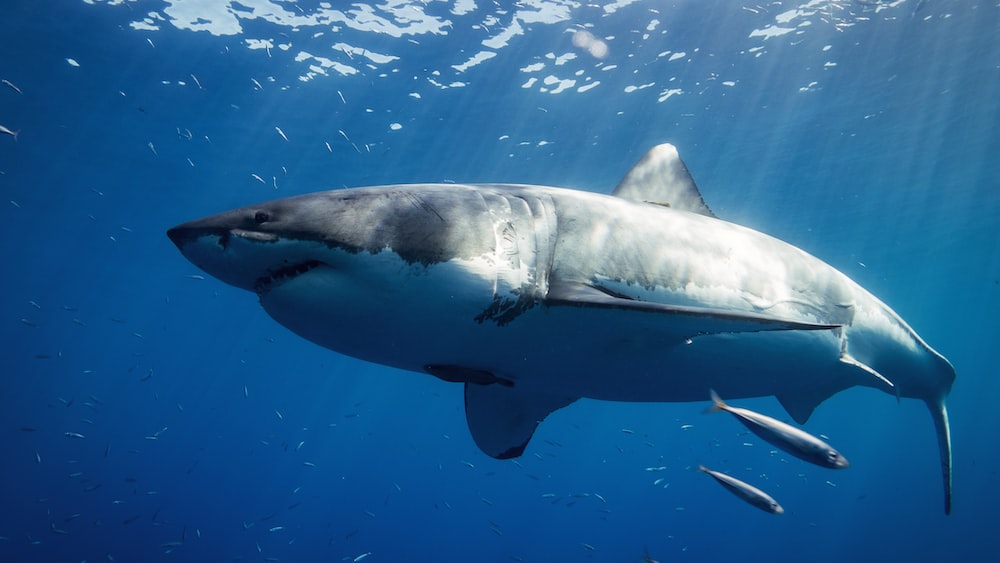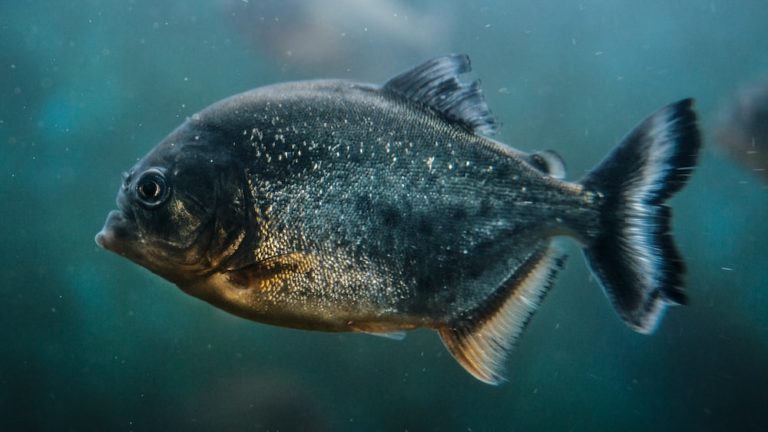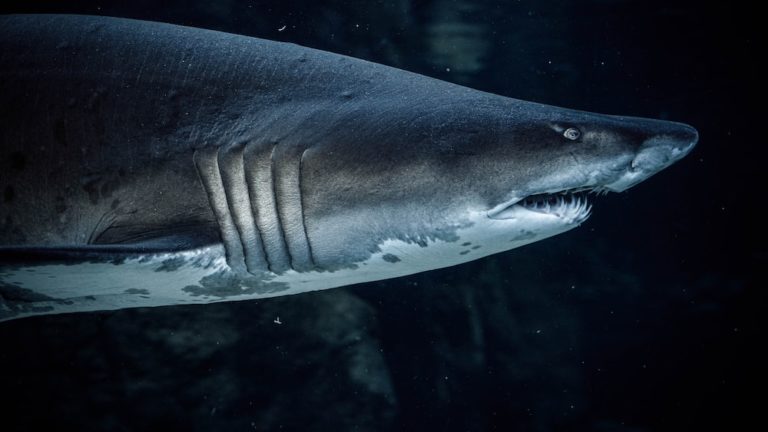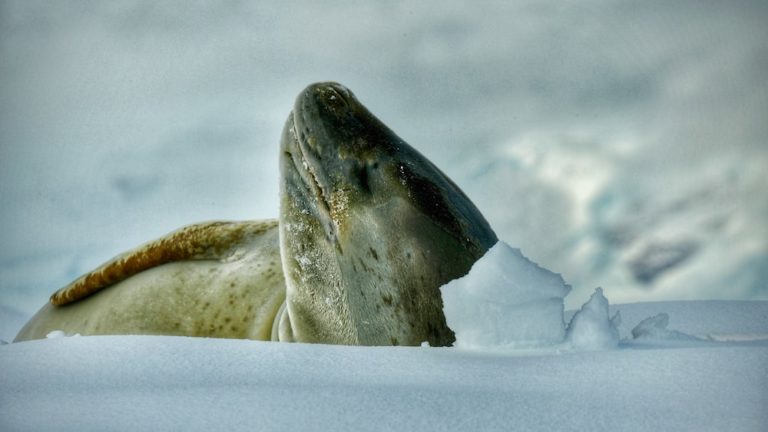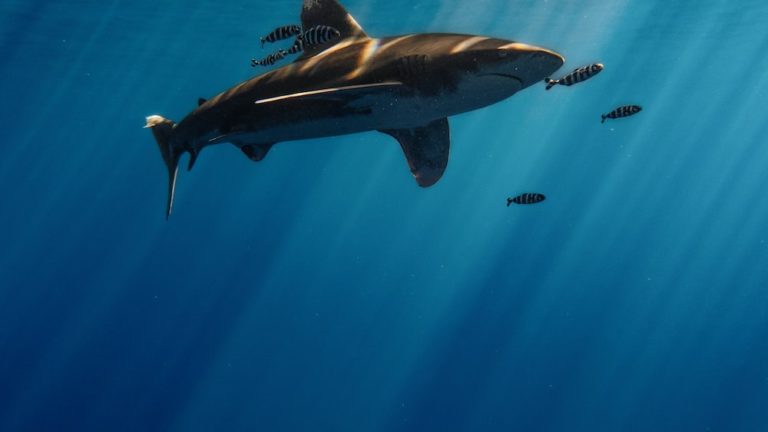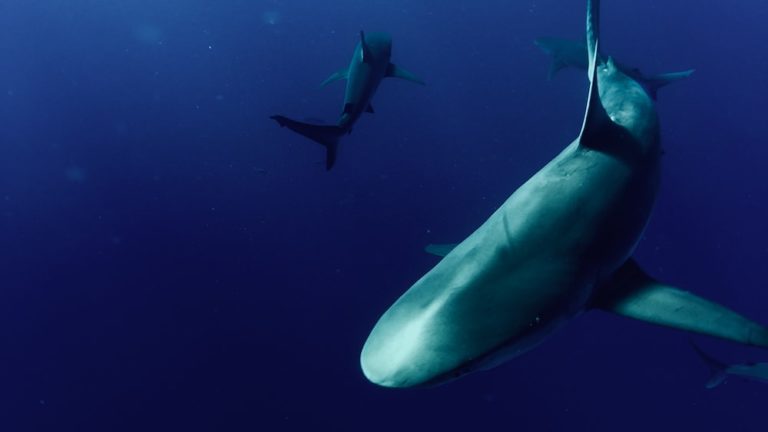Why Do Sharks Eat Seals: The Ultimate Guide
Why Do Sharks Eat Seals: The Ultimate Guide
Have you ever found yourself wondering about the deep and mysterious dynamics of the ocean’s top predators? Specifically, why do sharks eat seals? It’s a thrilling question that plunges us into a world where survival and instinct intertwine beneath the waves. For marine life enthusiasts, eco-adventurers, and conservationists, the relationship between sharks and their preferred prey is not just fascinating; it’s a key to understanding maritime ecosystems.
Key Points:
- Sharks prefer seals due to their high-energy blubber.
- Conservation laws protect both sharks and seals by regulating hunting and managing fisheries.
- Seals have developed adaptations to avoid shark predation, such as keen senses and agility.
- Human activities, such as overfishing and habitat alteration, influence the dietary habits of sharks.
- Sharks play a critical role in controlling the population dynamics of their prey, such as seals.
- Promoting peaceful coexistence between sharks, seals, and humans is paramount to marine conservation.
Dive in with me as we navigate the waters around Cape Cod and other feeding hotspots, where the drama of shark-seal interactions is as commonplace as the lapping of the waves. Here, the white sharks patrol the coast with a stealth reminiscent of a spy thriller. But, this is no fiction; it’s the harsh reality of nature’s food web.
We’ll explore cunning shark tactics, the graceful escape maneuvers of seals, and how these interactions shape the environment both underwater and on the shorelines of New England. So, take a deep breath and prepare to dive deep into the ocean’s blue, as we seek to answer the question: do sharks eat seals and, if so, why?
The Predatory Behavior of Sharks Towards Seals
Sharks have earned their reputation as one of the sea’s most formidable predators. Their interactions with seals are a prime example of nature’s harsh realities, where the battle for survival takes center stage. The relationship between predator and prey is complex, influenced by evolution, habitats, and the ever-changing conditions of our oceans.
The Role of Seals in a Shark’s Diet
Seals are more than just an occasional snack for many shark species; they are a vital component of the diet. These rich-in-blubber animals provide a high-energy meal that is perfect for the large calorie needs of a roving shark, particularly the apex predators like white sharks that traverse vast ocean territories.
Nutritionally dense and often abundant, seals offer the kind of meal that can sustain these marine hunters across the spans of their migratory patterns. It’s a chilling, yet natural occurrence when the instinctual hunt begins – the ocean’s way of maintaining balance and providing sustenance for its most notorious wanderers.
Understanding the vital role seals play in the diet of apex predators like sharks helps us appreciate the natural balance and sustenance provided by the ocean.
Hunted to Low Numbers: The Impact on Shark Feeding Habits
Overfishing and hunting pressures have led to dramatic declines in certain seal populations worldwide. As a direct consequence, sharks, particularly in regions like New England, have had to adapt their feeding tactics and diet due to the scarcity of their prey. When seals are hunted to low numbers, it’s a ripple effect that touches every corner of the marine ecosystem.
Understanding these changes is vital for conservation efforts, as sharks might resort to other prey which could cause unexpected shifts in the ocean’s delicate balance. Researchers particularly keep an eye on the Cape Cod region, where the presence (or absence) of both seals and white sharks could serve as indicators of health for the maritime environment.
Protected by Law: How Conservation Efforts Affect Shark Prey Selection
In recent decades, both sharks and seals have become protected by law in various parts of the world. Such measures aim to curb the impact of human exploitation and enable these species to regain a foothold in their natural environments. This resurgence of seal populations under legal protection has a direct effect on shark behaviors and diet choices.
For instance, the rising number of seals in areas like Cape Cod has been attributed to the comeback of white sharks to these locales. The laws have given sharks a chance to return to their historic feeding grounds and reclaim their role as apex predators in a revitalizing ecosystem.
The Ecological Significance of Shark-Seal Interactions
The dance between shark and seal is more than predator and prey locked in eternal struggle; it reflects a significant ecological narrative where balance and resilience prevail. These interactions are pivotal in maintaining the health of marine environments, ensuring a thriving ocean for future generations of all species.
Recovering Populations: Seals and Sharks in Ecosystem Balance
As seal populations recover thanks to protection laws and conservation efforts, the balance of the marine ecosystem starts to stabilize. It’s a promising sight for those invested in the health of our oceans. In waters where seals are plentiful, sharks fulfill their integral role as regulators of the food web, ensuring no species dominates to the detriment of others.
The return of seals and white sharks to regions like New England showcases a positive outcome of conservation where the natural order can reestablish itself. These recoveries are crucial in demonstrating the effectiveness of wildlife protection and carry hopeful implications for other struggling species.
The return of seals and white sharks to regions like New England showcases a positive outcome of conservation where the natural order can reestablish itself.
Usual Prey off the Menu? No Problem: Sharks’ Dietary Adaptability
When usual prey like seals become scarce, do sharks eat seals or move onto different menu options? Sharks’ dietary adaptability is nothing short of remarkable. They demonstrate an uncanny ability to switch their feeding preferences as required by the availability – or unavailability – of their preferred snacks.
This adaptability is vital for survival in an ever-changing marine environment. Whether due to natural fluctuations or human impact, sharks can modify their diet, revealing the complex interplay between different ocean species. Cape Cod’s white sharks, for instance, are known to feast on a variety of sea life, depending on what the season offers.
Top Level Predators: The Dynamics of Marine Food Webs
At the apex of the marine food chain, sharks play a critical role in controlling the population dynamics of their prey, such as seals. Their predation prevents overgrazing of vital seagrass beds and helps to keep the ocean’s ecosystems in fine balance. It’s a complex waltz and sharks lead the dance with a fierce grace.
These predators’ activities can indicate the health of our oceans. Areas with a robust population of top-level predators like white sharks often signify a healthy, rich-in-biodiversity marine environment. Alternatively, their absence can raise alarms about the underlying issues that might be plaguing the ecosystem.
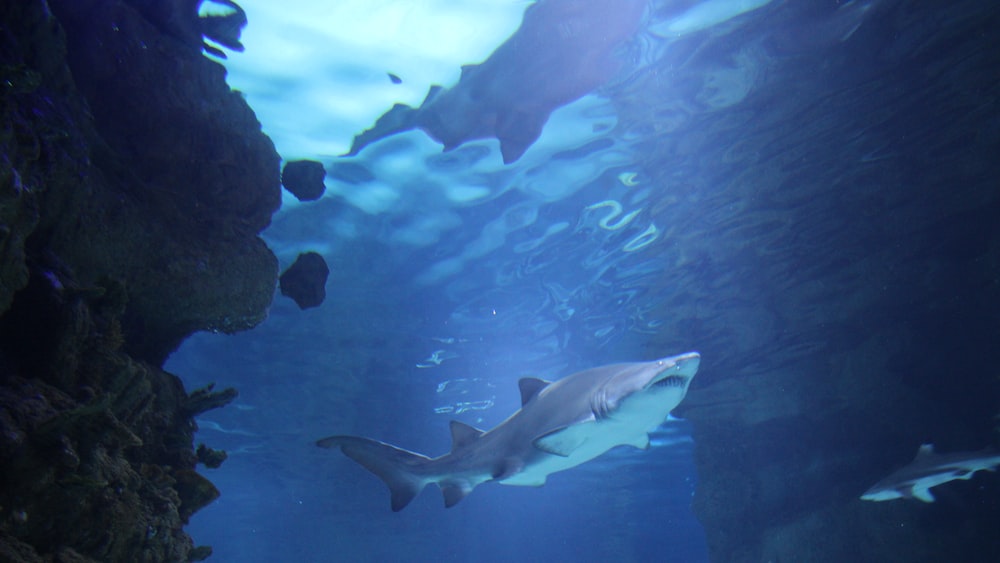
Behavioral Patterns and Hunting Strategies
Delving into the behavioral patterns and hunting strategies of sharks uncovers an intricate world of evolutionary skills and instincts. These patterns have been shaped over eons, and they provide insight into the complex relationships that make the marine ecosystem one of the most fascinating ecosystems on the planet.
How Sharks Hunt and Capture Seals
Sharks employ a variety of strategies to hunt and capture seals – a haunting dance where precision meets power. For showering prey like seals, stealth and speed are the sharks’ tools of the trade. They often lurk beneath their unsuspecting targets, exploding upwards with astonishing agility and force as they snatch their meal.
At places like Cape Cod, the great white sharks have perfected this technique, propelling themselves with such immense power that they can launch both themselves and their prey clear out of the water. It’s a spectacular, though sobering, natural spectacle of predation and survival.
Sharks use stealth and speed to hunt seals, employing explosive agility and force to snatch their prey, creating a sobering spectacle of predation and survival.
The Role of Sensory Perception in Detecting Prey
In the domain of the deep, sharks’ sensory perception plays a pivotal role in detecting prey. Their ability to sense even the faintest electrical fields given off by a seal’s muscle twitches is unmatched in the animal kingdom. This, combined with acute vision and other senses, makes them unerringly effective hunters.
Sharks are also masters of their environment, using water pressure changes to detect the presence of seals well before they’re seen. These sensory superpowers allow sharks to home in on seals with precision, which is crucial for survival in the unforgiving world of the ocean.
Attack Strategies: Stealth and Surprise in Shark Predation
Stealth and surprise are key components in the shark’s arsenal of attack strategies. By keeping a low profile and minimizing their presence, they can approach seals without alerting their prey until the final moments. It is a display of patience and discipline, honed from millions of years of evolution.
Sharks, particularly white sharks in the murky waters of New England, have mastered the element of surprise. Often attacking from below, they use the ocean’s light filtering from above to camouflage their approach. By the time the seal notices its peril, it’s usually too late. Stealth and speed are the shark’s greatest allies in the epic battle for nourishment.
The shark’s ability to use stealth and surprise in its attack strategies showcases the importance of patience and discipline in achieving success.
Species-Specific Diets and Preferences
Within the diverse world of sharks, there are marked differences in species-specific diets and preferences. These distinctions are not just fascinating from a biological standpoint, but they also have significant implications for our understanding of the marine food web.
Great White Sharks and Their Preference for Seals
Great White Sharks are often seen as the oceans’ most formidable predators, and their preference for seals is a tale as old as time. Their acute sense of smell and the nutrient-rich blubber of seals make them an ideal prey item. Seals provide a high-energy meal, which is essential for the massive sharks that roam the vast oceans. Dive tours off South Africa’s coast showcase the almost choreographed dance of death as sharks breach the surface, clamping down on their unsuspecting prey with powerful jaws.
In cooler climates, like the gray seals off Cape Cod, these sharks particularly favor the younger seals, which are not as versed in the art of evasion. As eco-adventurers will note, the annual congregation of Great Whites in such areas highlights an evolutionary arms race between predator and prey that is both brutal and necessary for the health of the marine ecosystem.
Variations in Diet Among Different Shark Species
Sharks are as diverse in their diet as the oceans they inhabit. Not all sharks share the Great White’s penchant for seals, as some prefer a more eclectic menu. For instance, Tiger Sharks are often labeled the oceanic garbage cans, owing to their tendency to consume a bewildering array of items. Reef sharks, with their smaller stature, might opt for fish and octopi, while the massive Whale Shark nonchalantly filters krill and small fishes through its cavernous mouth.
Deep-sea dwellers like the Goblin Shark, with its protrusible jaws, often snag squids and other invertebrates. The Bull Shark, unfazed by its environment, may hunt in both salt and freshwater, making it one of the more adaptable species. While sharks as a group boast impressive dietary plasticity, their menus often reflect both availability and evolved preference, shedding light on the complex food webs to which they belong.
Upsetting this delicate balance, however, are the shifts in marine ecosystems as influenced by climate change and overfishing. These shifts can lead to a dietary shuffle, as sharks adapt their feeding strategies to the changing availability of prey.
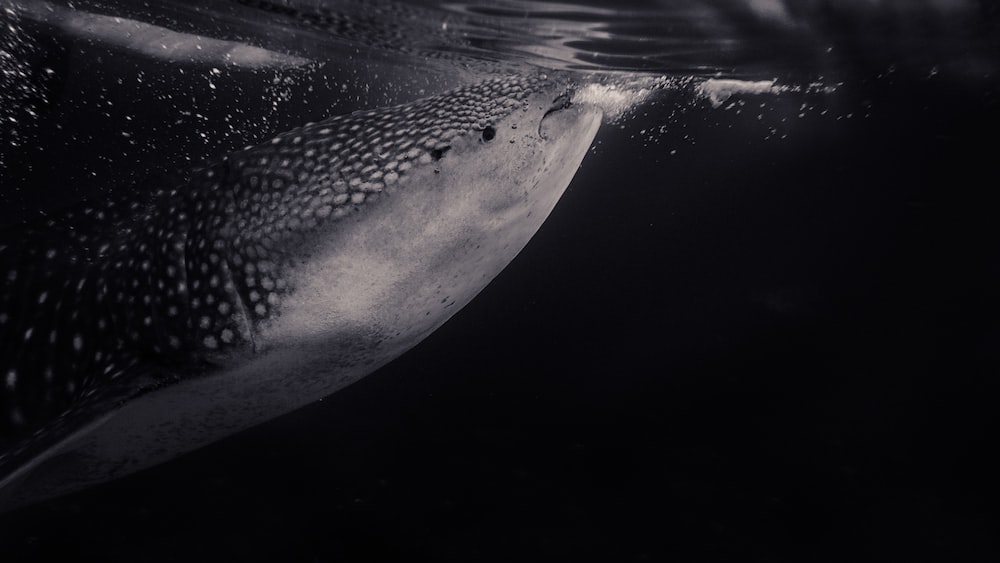
Leopard Seals and Fur Seals: Predators Turned Prey?
In the swirling aquatic dance of the ocean’s food web, roles can often be reversed. For the sleek and powerful Leopard Seals, accustomed to being top predators in the Antarctic, it’s a strange twist of fate to sometimes find themselves on the menu for killer whales and larger sharks. These seals, armed with their own set of formidable jaws, usually hunt penguins and smaller seals, becoming the embodiment of the harsh ecological hierarchy that governs the icy seas.
Fur Seals, with their plush coats that once had them hunted nearly to extinction, are no strangers to predation. Sharks, especially in locations like the waters off Namibia, have been known to prey on these agile creatures. Though adept in the water, Fur Seals must always be vigilant for the silent shadow that could spell their end, as the great white sharks circle below.
In the ocean’s food web, even top predators like Leopard Seals can become prey, highlighting the harsh ecological hierarchy.
Human-Shark-Seal Interactions
Our oceans stir with drama below the waves, as sharks and seals act out their instinctive roles. As humans, we trespass into this liquid theatre, sometimes altering the script with our very presence. Conservationists and marine life enthusiasts alike are captivated by these interactions and their far-reaching implications. But for the animals involved, it’s a matter of survival, with human activities casting long shadows over their aquatic stage.
Misconceptions About Sharks Hunting Humans
The fear that sharks actively hunt humans as prey is largely unfounded; rather, most incidents are cases of mistaken identity. Sharks, curious and guided by their senses, may give a ‘test bite’ to an unfamiliar object to understand what it is. Unfortunately, even a cautious nip can be gravely consequential due to their serrated jaws. Initiatives like SharkWeek and public education campaigns work to dispel these myths, highlighting sharks’ critical role in marine ecosystems and encouraging a more respectful coexistence.
The Impact of Human Activities on Shark and Seal Populations
Human activities have a profound impact on shark and seal populations, often with ripple effects through the entire marine ecosystem. Overfishing and bycatch can drastically reduce the sharks’ prey, forcing them to alter their dietary habits or risk starvation. Likewise, seals, once hunted voraciously for their fur and oil, now face habitat destruction and competition for food resources due to human encroachment. These challenges underscore the urgency for more sustainable practices and marine conservation efforts.
Human activities deeply affect shark and seal populations, leading to ripple effects in the marine ecosystem, highlighting the need for sustainable practices and marine conservation efforts.
Coexistence Strategies: Reducing Conflict Between Sharks, Seals, and Humans
Promoting peaceful coexistence between sharks, seals, and humans is paramount to marine conservation. By establishing marine protected areas, we create safe havens for these species to thrive. Ecotourism, when managed responsibly, provides an opportunity for humans to witness these incredible animals in their natural habitats without disrupting their behaviors. Such strategies not only protect marine biodiversity but also foster a deeper appreciation for the ocean’s inhabitants.
FAQs
1. Why do sharks prefer seals over other prey?
Sharks prefer seals due to their abundant blubber, which is rich in calories, aiding in the sharks’ need for high-energy food. This preference is evident in hunting hotspots where seals are both populous and relatively easy to catch.
2. How do conservation laws protect both sharks and seals?
Conservation laws protect both sharks and seals by regulating hunting, managing fisheries, and designating marine protected areas. These laws aim to maintain balanced populations, which is vital for the health of marine ecosystems.
3. What adaptations do seals have to avoid shark predation?
Seals have developed several adaptations, such as keen senses, agility, and the ability to rapidly change direction under water to avoid shark predation. Their camouflage coloring also offers some concealment against the ocean backdrop.
4. How do human activities influence the dietary habits of sharks?
Human activities such as overfishing and habitat alteration influence the dietary habits of sharks by changing the availability and diversity of their prey, leading sharks to adjust their diets accordingly.
Conclusion
Our shared passion for marine life and tireless curiosity lead us to the question, “do sharks eat seals?” The answer to this question unwraps layers of complexity in the marine food web, where energy flows between predator and prey in a delicate balance that we, as humans, have the power to disrupt or to sustain. Plunging beneath the waves into this world reveals stories of survival, adaptation, and the interdependencies that sustain the saline lifeblood of our planet.
Marine life enthusiasts, conservationists, and eco-adventurers, we find ourselves on the brink of a sea change. It’s time to create more narratives where the oceans thrive, sharks continue to patrol the open waters, and seals bask on rocky shores, each playing their part in the ocean’s opus. Won’t you join me, Jasper Flynn, in championing a future where marine kingdoms prosper under the shared guardianship of all who hold the ocean close to their heart? Farewell, fellow ocean defenders, until our next dive into the deep blue.

